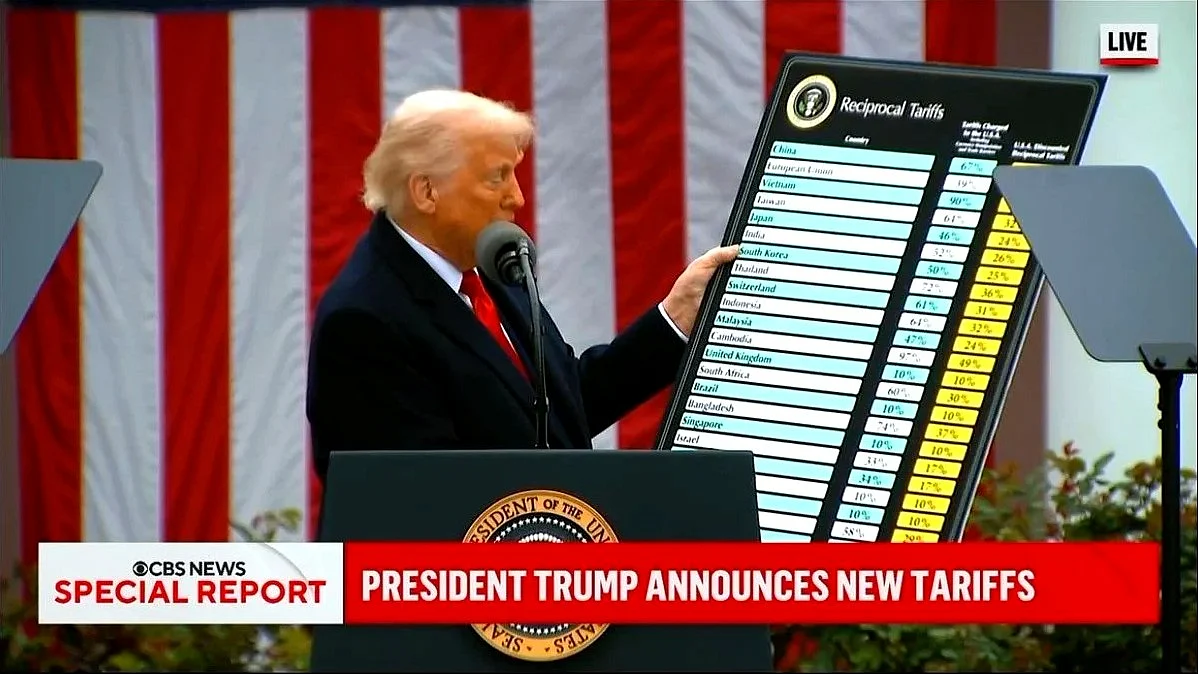World
US announces new reciprocal tariffs on India, 70 other countries
While imposing 25 per cent 'Reciprocal Tariff, Adjusted' on India, the list does not mention the 'penalty' for purchases from Russia

US President Donald Trump on Friday, 1 August unveiled sweeping new tariffs on dozens of countries, including 25 per cent duties for goods from India, marking a new era of American protectionism that triggered fresh tensions and concerns over a much wider disruption in the global trade landscape.
The US President signed an executive order that raised tariffs for over five dozen countries after Washington's negotiations for trade deals went down to the wire ahead of the 1 August deadline. The new levies will come into effect from 7 August.
In the executive order titled 'Further Modifying The Reciprocal Tariff Rates', Trump announced tariff rates for nearly 70 nations.
A 25 per cent 'Reciprocal Tariff, Adjusted' has been imposed on India, according to the list released. The executive order, however, does not mention the “penalty” that Trump had said India would have to pay because of its purchases of Russian military equipment and energy.
On Wednesday, Trump announced a 25 per cent tariff on India and said an additional penalty would be imposed for New Delhi's purchases from Russia. In April, Trump had announced that India would face a 26 per cent 'discounted reciprocal tariff'.
Responding to the executive order, Senior Vice President of the Asia Society Policy Institute (ASPI) and former Deputy US Trade Representative Wendy Cutler said in a statement that India, a “promising candidate for an early agreement”, was assigned a 25 per cent tariff.
This "calls into question the fate of a bilateral trade agreement. The President's annoyance with India on a range of trade and broader matters rang through his Truth Social post,” Cutler said.
Federation of Indian Export Organizations (FIEO) director-general Ajay Sahai said the order provides relaxation for goods in transit and those loaded on ships for final sailing to the US by 7 August.
Published: undefined
Goods cleared for consumption in the US by 5 October will also not be subject to reciprocal tariffs, thus providing some relief to exporters of goods already shipped or likely to be shipped this week.
According to Cutler, US customs officials will face challenges implementing the executive order, particularly with the different tariff rates now applied across the world. The seven-day breathing period before implementation will help, but importers should expect start-up problems at a minimum.
In the executive order, Trump stated that some trading partners have agreed to, or are on the verge of agreeing to, meaningful trade and security commitments with the US, thus signalling their sincere intentions to permanently remedy trade barriers and align with Washington on economic and national security matters.
“Other trading partners, despite having engaged in negotiations, have offered terms that, in my judgment, do not sufficiently address imbalances in our trading relationship or have failed to align sufficiently with the United States on economic and national-security matters,” he said.
The tariff modifications shall be “effective with respect to goods entered for consumption, or withdrawn from warehouse for consumption, on or after 12:01 am eastern daylight time 7 days after the date of this order.”
The tariffs in the list range from 10 per cent to 40 per cent, with Japan being charged 15 per cent, Laos and Myanmar (40 per cent each), Pakistan (19 per cent), Sri Lanka (20 per cent) and the United Kingdom (10 per cent).
Published: undefined
Follow us on: Facebook, Twitter, Google News, Instagram
Join our official telegram channel (@nationalherald) and stay updated with the latest headlines
Published: undefined